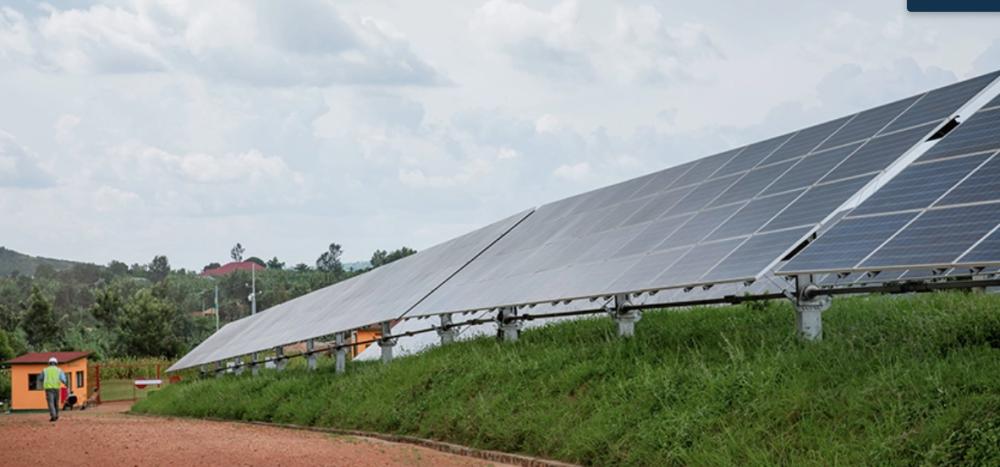Africa-Press – Rwanda. The search for peace and security in eastern DR Congo goes on. By the time you read this, you will probably have heard about what came out of the latest round of the Nairobi Process which convened yesterday in Nairobi. All fair-minded people, and DR Congo’s neighbours in particular, wish to see real peace in the region.
But not so the government of the DR Congo, it seems, which, although taking part in different diplomatic efforts to end conflict in that region, also appears intent on scuttling those same efforts. It sounds strange, but there is some logic to it.
First, they appear to prefer the military option, and even then, only partially. Their single aim is to see the M23 rebels crushed. That has remained unchanged even with the ongoing diplomatic efforts.
Second, as analysts have said many times, chaos and violence are tied to the electoral fortunes of the government in power in DRC at the moment.
A state of insecurity also favours the continued unchecked exploitation of the much-touted natural resources of the area by foreign interests and their local facilitators.
Finally, the Congolese state was founded and built on violence. It has been a key factor at defining moments in the country’s history.
While this logic might predispose the government to a war path, what gives them the confidence that they can win considering that they have suffered reverses on the battlefield at the hands of the same M23 they want to destroy?
One reason, you might say, is ignorance and their refusal to understand the nature of conflict, and arrogance arising from the misplaced belief in the power of the vast size of their country and its fabled unlimited mineral resources.
The other is the conviction that the East African Community Regional Force (EACRF) that is deploying in the area will do the fighting for them and achieve what their army and their FDLR and other militia allies have failed to do.
This view has been encouraged by a war-mongering press and social media and other non-governmental actors in the region and abroad. The looters of DR Congo’s wealth, though never mentioned, but who gain from instability a weak state, also encourage this position.
Talk by some politicians in Kenya and media reporting on EACRF deployment have also aided in raising their confidence.
Interestingly, this sabre rattling is from politicians and the media. The men who will actually do the fighting have been more diplomatic in their pronouncements. Major General Jeff Nyagah, Commander of the EACRF, has been quick to say that the political and diplomatic processes must come first before any military action.
But perhaps in thinking this way, the DR Congo authorities are getting ahead of themselves. Or they have given up on the diplomatic option, which in any case they are doing everything to thwart. Whichever way, the prospects for an outcome in their favour or even for peace generally do not appear good.
Looking at the diplomatic front, both the Luanda and Nairobi processes seem to have been designed to fail.
The Luanda talks started on the wrong foot by framing the insecurity in eastern DR Congo as having been caused by Rwanda, or even as a DR Congo-Rwanda conflict. And so, mending relations between the two countries or getting Rwanda to act in a certain way will solve the problem.
That can only be the starting point to finding a solution, not its end.
Again, framing the issues this way omits almost entirely the root cause of the insecurity in the area, namely, FDLR and other foreign armed groups as well as a myriad local militia. Even when they are acknowledged in official communique, they are only secondary and less urgent, matters that can be dealt with later.
The Nairobi Process has made the same mistake by shutting out M23, the force the Congolese army is fighting, and the only one with a legitimate cause. Who will the government be talking to other than their main opponent?
Matters have not been made easier by the facilitator of the process, Kenya’s former president Uhuru Kenyatta, seems to have got only a partial picture of what is happening in eastern DR Congo during his fact-finding and consultation mission there recently. He talked to only government officials, civil society organisations in the area, religious groups and relief agencies whose bias in the conflict is well-known.
He seems to have been moved by the plight of people displaced by the conflict. No one can blame him for that. But he should also have visited and sought the views of Congolese refugees who have been living in camps in Rwanda and Uganda for more than two decades. And perhaps even the M23 rebels as indeed they have requested. He would then have got a better picture.
And so despite his good intentions, he presented only half of the story because that is only what he heard and saw.
The diplomatic processes, however, recognise the military threat of M23 and so are quick to prescribe a military solution. But that, too, has weaknesses written all over it.
This is not the first such intervention force in eastern DR Congo and there are no signs it will be any different or achieve different results.
First, there was the United Nations Mission in Congo (MONUC) in 1999, later changed to MONUSCO, the UN Stabilisation Mission in Congo in 2010 and still in place today. It has done little or nothing to stabilise the region. Instead, it has largely stood by as armed groups carried on as before and actually grew in number and viciousness.
The Rwandan genocidal outfit, FDLR, they were supposed to help root out has stayed in place and continued to commit atrocities on the local population who live in mortal fear of it, and remained a threat to the security of Rwanda. And worse, it has, for all intents and purposes, been integrated into the Congolese army in its war with M23.
Perhaps the only positive thing that can be said about MONUSCO is that it facilitated the repatriation of some in the FDLR who wished to return home.
Then there was the Force Intervention Brigade (FIB), part of MONUSCO, formed in 2013 to neutralise and disarm armed groups in the region. The FIB, made up of troops from South Africa, Tanzania and Malawi, had a more robust mandate to go on the offensive, as we hear the EARF will have.
Then as now, M23 was getting the better of the Congolese military.
However, they only targeted M23, which withdrew from the areas they had taken. Once that happened, the FIB seemed to say ‘mission accomplished’ and left the other negative forces intact.
Did this military intervention bring about peace and restore security and stability? No, and the reasons are not difficult to see.
One is bad faith by successive RDC governments and refusal to honour agreements. The withdrawal of M23 in 2013 was not the result of military pressure alone, it was also made possible by an agreement between them and the DRC government aimed at addressing the cause for their taking up arms in the first place.
But the moment M23 was no longer a military threat on the ground, the government refused to honour the agreement. Nothing has therefore changed. If anything, conditions of the local population have become worse. Hate speech and violence against Rwandophone Congolese has been on the rise, often incited by government officials at the highest level. The spectre of genocide is hanging over the region.
This, in addition to the fact that the original source of instability, groups like FDLR, were allowed to operate as before.
In these circumstances, can the M23 and indeed others in the region trust the government to keep its side of the bargain this time around? What new assurances can they give? To raise the level of trust necessary for reaching and implementing a settlement, it is crucial to have credible and able guarantors for it.
Something else has not changed. The Congolese state remains absent and weak in the east, making it open territory for the armed groups to operate freely.
It is in this mix of mistrust and multiple armed groups that the EARF is being deployed, and that will have a bearing on its success or not. But there is another issue with this force that seems designed to hamper or limit its operations.
The countries contributing troops to the EARF seem to be primarily concerned with their own national security interests and are deploying where these are threatened.
And so, Burundi has its troops in South Kivu where the Burundian Red Tabara rebels are based. Uganda is sending its contingent to Ituri Province where the Ugandan rebels, the Alliance of Democratic Forces (AFD), has been based for decades.
That leaves Kenyan troops to take care of the North Kivu sector, where M23 are fighting, and where FDLR have had bases for nearly three decades. This is the same area linked to Rwanda’s security concerns. Presumably they will take on M23, which from the rhetoric in Nairobi, is seen as the greatest threat.
Rwanda was left out of the EARF, which was probably a big mistake. If the others are there to take care of their national security or economic interests, who will take care of Rwanda’s concerns? Will the Kenyan contingent do that?
In the end, unless the ongoing peace efforts in DRC address all these issues definitively, there can’t be much reason for optimism. M23 could be defeated or forced to withdraw, but if the other armed groups stay, and if the Congolese state remains weak, nothing will change. Except, of course, if the East African Community also helps in building the state. We are not holding our collective breath yet.
For More News And Analysis About Rwanda Follow Africa-Press






